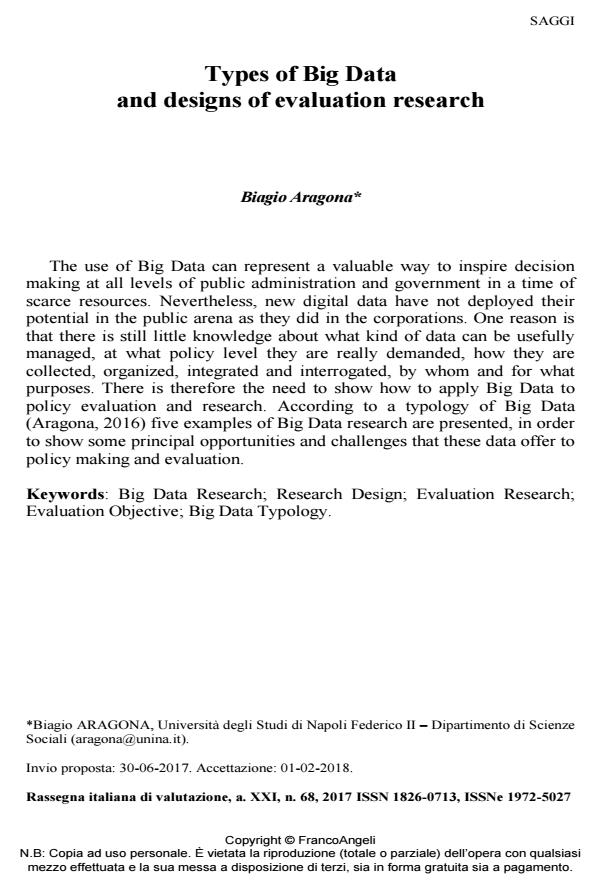Types of Big Data and designs of evaluation research
Journal title RIV Rassegna Italiana di Valutazione
Author/s Biagio Aragona
Publishing Year 2018 Issue 2017/68
Language Italian Pages 15 P. 48-62 File size 376 KB
DOI 10.3280/RIV2017-068004
DOI is like a bar code for intellectual property: to have more infomation
click here
Below, you can see the article first page
If you want to buy this article in PDF format, you can do it, following the instructions to buy download credits

FrancoAngeli is member of Publishers International Linking Association, Inc (PILA), a not-for-profit association which run the CrossRef service enabling links to and from online scholarly content.
The use of Big Data can represent a valuable way to inspire decision making at all levels of public administration and government in a time of scarce resources. Nevertheless, new digital data have not deployed their potential in the public arena as they did in the corporations. One reason is that there is still little knowledge about what kind of data can be usefully managed, at what policy level they are really demanded, how they are collected, organized, integrated and interrogated, by whom and for what purposes. There is therefore the need to show how to apply Big Data to policy evaluation and research. According to a typology of Big Data (Aragona, 2016) five examples of Big Data research are presented, in order to show some principal opportunities and challenges that these data offer to policy making and evaluation.
Keywords: Big Data Research; Research Design; Evaluation Research; Evaluation Objective; Big Data Typology.
- Research Anthology on Implementing Sentiment Analysis Across Multiple Disciplines Suania Acampa, Ciro Clemente De Falco, Domenico Trezza, pp.761 (ISBN:9781668463031)
- Handbook of Research on Advanced Research Methodologies for a Digital Society Suania Acampa, Ciro Clemente De Falco, Domenico Trezza, pp.176 (ISBN:9781799884736)
Biagio Aragona, Types of Big Data and designs of evaluation research in "RIV Rassegna Italiana di Valutazione" 68/2017, pp 48-62, DOI: 10.3280/RIV2017-068004